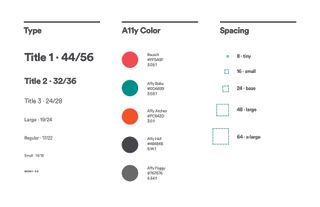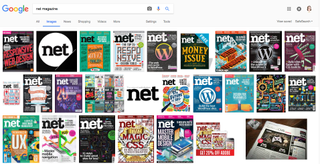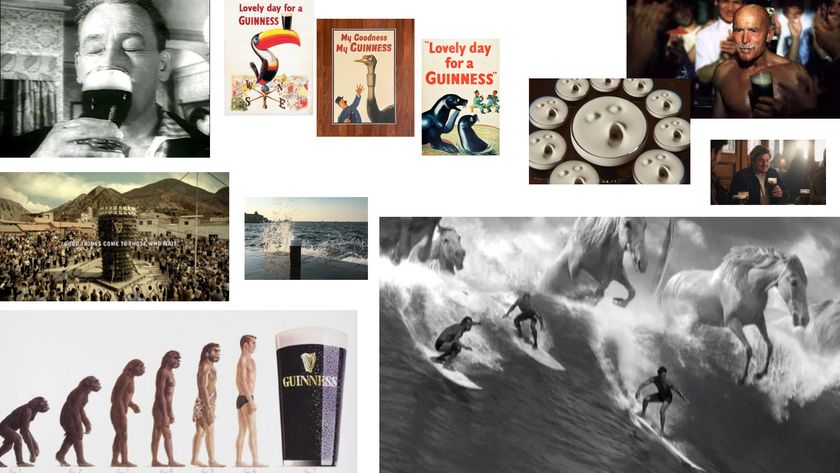15 web design secrets from the world's biggest brands
Design tips from the likes of Facebook, Google, Buzzfeed and Netflix.

Big companies – those with millions (if not billions) of users – tend to have complex problems that attract some of the best talent the market has to offer. The bigger the company, the bigger the challenge. But bringing together so many brilliant minds also provides an opportunity to do great things.
When it comes to shaping our online experiences, big companies have proven to be very influential in recent years, offering disruptive user experiences, new ways of loading and displaying content, and elegant approaches to getting the users where they want to go. That’s what happens when your teams are at the top of their game.
We spoke to designers from these brands to explore how they present their products to users, and the processes that have led them to design success.
01. Be humble
Cap Watkins, BuzzFeed
"Be humble about your work. That’s really what it all comes down to. A lot of designers do a project and try to keep it to themselves until it’s perfect, or reject feedback because it’s not what they had in their mind.

"Being humble allows for the possibility that your design choices may be wrong, and opens you up to receiving feedback and information from your coworkers, users, people in other departments, and so on. It’s probably one of the most important traits for anyone – designer or not – when it comes to producing great work."
02. Create a community
Nick Myers, Fitbit
Get the Creative Bloq Newsletter
Daily design news, reviews, how-tos and more, as picked by the editors.
"Our organisational structure helps designers have more impact and be more efficient. Many internal design teams are centralised, but the Fitbit UX team’s designers are integrated across product development. This means, typically, that members of the design team sit with members of product and engineering to collaborate directly on a specific feature or platform element.

"This means designers can be more focused, as opposed to multitasking in a centralised agency-like model. They also have more input on product strategy and can see the work through to launch, so it’s generally a lot more rewarding. We work hard to help designers feel like part of the community by assigning design managers to support teams in clusters."
03. Share early and often
Sam Horner, Netflix
"The Netflix design team starts by ideating concepts, and uses a blend of speaking with users and live data to develop them. These insights allow us to build stronger ideas, unbounded by opinion or bias, and design wholly focused on our users.

"We share early and share often, encouraging everyone on our team to have a voice. No single person has control over what gets created, empowering designers with ownership over their work. Our flat team structure means designers are consulted by others based on their skills, not their title. Netflix doesn’t impose any processes on our designers, we simply give them access to the resources they need to create great TV experiences."
04. Learn to improve
Garlon Cheung, BBC
"At the BBC the audience is at our core, so gaining insights and testing is important. Because of diverse audience needs, every team works in different ways to achieve this, but the overall mentality is learning to improve. This means making design decisions backed by evidence. It’s vital we use both quantitative and qualitative research to understand what people do and why they do it.

"New methods appear frequently and teams experiment to see what is effective and what isn’t. We’re constantly improving how we collaborate and broadening our skillset. A big organisation like ours needs great communication and great people, so we give them the freedom to be the best at what they do."
05. Be inclusive
Ashleigh Axios, Automattic
"Automattic is a distributed company, with people in 51 countries around the globe unifying around the single goal of making the web a better, more equitable place. We believe that open source is one of the most powerful ideas of our generation and that collaboration leads to innovation. We share as many of our ideas, resources and code with the world as we can, priding ourselves on our inclusiveness.

"We Automatticians also have a hunger to learn from our peers, products and users. We’re an incredibly flat company – we believe ideas can come from anywhere and recognise that our results are better when we treat each individual as a catalyst for much-needed change."
06. Mix it up
Netta Marshall, Airbnb
"We have a team dedicated to creating tools for designers, as well as an expansive Design Language System, and an internal tool called Airshots that allows us to quickly and easily see what everyone else is designing. Since designers are embedded into sub-teams and sit with cross-functional members, this tool gives us visibility into what designers on other teams are focusing on.

"Being in close proximity to non-designers is useful for picking up new skills as well. If you want to learn to code, prototype, analyse data or research, there’s someone who’s more than happy to sit down and share their knowledge with you. As a designer, being open to different perspectives as a default is great when you’re designing for such an international audience."
07. Understand the problem
Fiona Yeung, Google
"UX design is an iterative, collaborative and ongoing process that involves many different people along the way. My first step in any design project is to understand the problem as well as who the target users are and what they want. It’s our responsibility to understand why we are designing something first, before we can jump right in.

"On my team at Google, we like to create use cases and personas, starting off with low-fidelity mockups in the early stages before moving on to hi-fi designs to demonstrate and test our ideas, catching any gaps in our solutions."
08. Open up your processes
Nick Myers, Fitbit
"One critical stage in our process is the group design critique. Each week, two design teams share work with the rest of the designers and researchers. The session is carefully facilitated to get the most out of the time together.

"A team shares the problem they’re trying to solve, the design solution, the users they’re designing for and where they are in the process. They also share the feedback they’re looking for from the rest of the team. After any clarifying questions have been asked, the team offers silent feedback via Post-It notes. The presenting team reviews the notes and open discussion happens around the bigger topics. We’ve evolved the process over many years and continue to refine it as the team has grown.
"The session helps the larger team participate in projects across Fitbit. Any system inconsistencies that may arise can be resolved. A lot of productive discourse happens in this session in a way that challenges the team. Most of all, the feedback is additive and helps the team push their work further than they would have on their own."
Next page: Top insights from designers at Twitter, Shopify and Etsy
Get your ticket for Generate New York now

The industry's best web design event Generate New York is back. Taking place between 25-27 April 2018, headline speakers include SuperFriendly’s Dan Mall, web animation consultant Val Head, full-stack JavaScript developer Wes Bos and more.
There’s also a full day of workshops and valuable networking opportunities – don’t miss it. Get your Generate ticket now.

Thank you for reading 5 articles this month* Join now for unlimited access
Enjoy your first month for just £1 / $1 / €1
*Read 5 free articles per month without a subscription

Join now for unlimited access
Try first month for just £1 / $1 / €1












